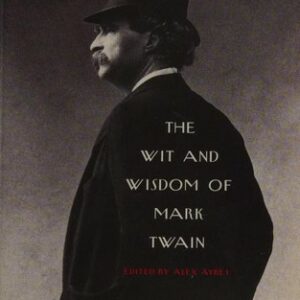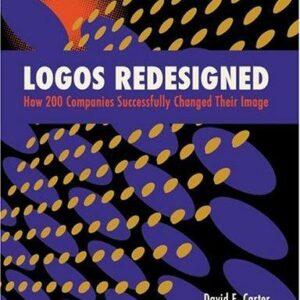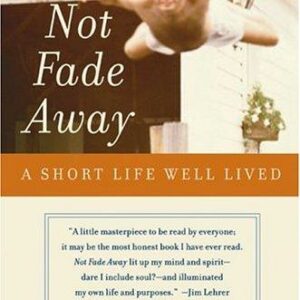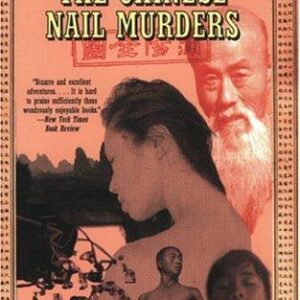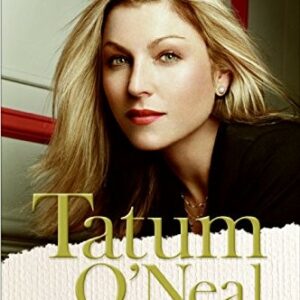The Sum of Us (Adapted for Young Readers)
$9.99
| Title | Range | Discount |
|---|---|---|
| Trade Discount | 5 + | 25% |
- Description
- Additional information
Description
The New York Times bestseller, adapted for a new generation of young readers, leaders, thinkers, and activists. A groundbreaking call to action that examines how racism affects and harms all of us and how we need to face it head-on, together.
The future can be prosperous for everyone, but only if we address the problems of racial and economic inequality.
McGhee believes that all people, of all ages and all backgrounds, need to rethink their attitude toward race and strive together to create opportunities that benefit everyone.
This book is a call to action. McGhee examines how damaging racism is, not only to people of color but also to white people. She offers hope and real solutions so we can all prosper. An expert in economic policy, McGhee draws lessons both from her work at a think tank and from her travels around the country talking to everyday Americans fighting for a more just and inclusive society.
The people she meets prove how the stories we tell ourselves about race and belonging influence the policies that determine our shared economic future.
The Sum of Us provides hope that with understanding and open-mindedness, the world can be more united and equitable than it is today.★ “Concisely and bitingly written with broad appeal and usefulness to researchers and general readers alike. A first and necessary purchase.” —School Library Journal, starred review
★ “Of great value to anyone who values straight-to-the-point, thorough writing on race in America.” —Kirkus Reviews, starred review
★ “A thought-provoking next read after Jason Reynolds and Ibram X. Kendi’s Stamped (2020).” —Booklist, starred reviewHeather McGhee is an expert in economic and social policy. The former president of the inequality-focused think tank Demos, McGhee has drafted legislation, testified before Congress, and contributed regularly to news shows, including NBC’s Meet the Press. She now chairs the board of Color of Change, the nation’s largest online racial justice organization. McGhee holds a BA in American studies from Yale University and a JD from the University of California, Berkeley, School of Law.Chapter 1
An Old Story: The Zero-Sum Hierarchy
When I was growing up, my family and my neighbors were always hustling. My mother had the fluctuating income of a person with an entrepreneur’s mind and a social worker’s heart. My dad, divorced from my mom since I was two, had his own up-and-down small business, too, and soon a new wife and kids to take care of. If we had a good year, my mom, my brother, and I moved into a bigger apartment. A bad spell, and I’d notice the mail going unopened in neat but worrisome piles on the hall table. I now know we were in what economists call the fragile middle class, all income from volatile earnings and no inherited wealth or assets to fall back on. We were the kind of middle class in the kind of community that kept us a stone’s throw from real poverty, and I think this shaped the way I see the world. My mother took us with her to work in Chicago’s notorious Robert Taylor public housing projects while she gave health lessons to young mothers, and some of my earliest playmates were kids with disabilities in a group home where she also worked. (It seemed she was always working.) We had cousins and neighbors who had more than we did, and some who had far less, but we never learned to peg that to their worth. It just wasn’t part of our story.
I did learn, though, to ask “why,” undoubtedly to an annoying degree. In the backseat of the station wagon facing the rear window, I asked why there were so many people sleeping on the grates on Lower Wacker Drive downtown, huddled together in that odd, unsunny yellow lamplight. Why did the big plant over on Kedzie have to close, and would another one open and hire everybody back? Why was Ralph’s family’s furniture out on the curb, and where did their landlord think Ralph was going to live now?
My father turned eighteen the year the Voting Rights Act was signed, 1965; my mother did when the Fair Housing Act was signed three years later. That meant that my parents were in the first generation of black Americans to live full adult lives with explicitly racist barriers lowered enough for them even to glimpse the so-called American Dream. And just as they did, the economic rules changed to dim the lights on it, for everyone. In the mid-1960s, the American Dream was as easy to achieve as it ever was or has been since, with good union jobs, low-cost homeownership, strong financial protections, a high minimum wage, and a high tax rate that funded American research, infrastructure, and education. But in the following decades, rapid changes to tax, labor, and trade laws meant that an economy that used to look like a football, fatter in the middle, was shaped like a bow tie by my own eighteenth birthday, with a narrow middle class and bulging ends of high- and low-income households.
This is the Inequality Era. Even in the supposedly good economic times before the COVID-19 pandemic that began in 2020, 40 percent of adults were not paid enough to reliably meet their needs for housing, food, health care, and utilities. Only about two out of three workers had jobs with basic benefits: health insurance, a retirement account (even one they had to fund themselves), and paid time off for illness or caregiving. Upward mobility, the very essence of the American idea, has become stagnant, and many of our global competitors are now performing far better on what we have long considered to be the American Dream. On the other end, money is still being made: the 350 biggest corporations pay their CEOs 278 times what they pay their average workers, up from a 58-to-1 ratio in 1989, and nearly two dozen companies have CEO-to-worker pay gaps of over 1,000 to 1. The richest 1 percent own as much wealth as the entire middle class.
I learned how to track these numbers in my early days working at Demos, a research and advocacy think tank working on public policy solutions to inequality, but what I was still asking when I decided to leave it fifteen years later was: Why? Why was there a constituency at all for policies that would make it harder for more people to have a decent life? And why did so many people seem to blame the last folks in line for the American Dream—black and brown people and new immigrants who had just been let in when it became harder to reach—for economic decisions they had no power to influence? When I came across a study by two Boston-based scholars, titled “Whites See Racism as a Zero-Sum Game That They Are Now Losing,” something clicked. I decided to pay the study authors a visit.
It was a hot late-summer day when I walked into the inner courtyard at Harvard Business School to meet with Michael Norton and Samuel Sommers, two tall and lean professors of business and psychology, respectively. Harvard Business School is where some of the wealthiest people in America cemented their pedigrees and became indoctrinated in today’s winner-take-all version of capitalism. It is an overwhelmingly white club, admittance to which all but guarantees admittance to all other elite clubs. Nonetheless, that’s where we sat as these two academics explained to me how, according to the people they’d surveyed, whites were now the subjugated race in America.
Norton and Sommers had begun their research during the first Obama administration, when a white Tea Party movement drove a backlash against the first black president’s policy agenda. They had been interested in why so many white Americans felt they were getting left behind, despite the reality of continued white dominance in US life, from corporations to government. (Notwithstanding the black president, 90 percent of state, local, and federal elected officials were white in the mid-2010s.) What Norton and Sommers found in their research grabbed headlines: the white survey respondents rated antiwhite bias as more prevalent in society than anti-black bias. On a scale of 1 to 10, the average white scoring of anti-black bias was 3.6, but whites rated antiwhite bias as a 4.7, and opined that antiwhite bias had accelerated sharply in the mid-1970s.
“We were shocked. It’s so contrary to the facts, of course, but here we are, getting calls and emails from white people who saw the headlines and thanked us for revealing the truth about racism in America!” said Norton with a dry laugh.
“It turns out that the average white person views racism as a zero-sum game,” added Sommers. “If things are getting better for black people, it must be at the expense of white people.”
“But that’s not the way black people see it, right?” I asked.
“Exactly. For black respondents, better outcomes for them don’t necessarily mean worse outcomes for white people. It’s not a zero sum,” said Norton.
As to why white Americans, who have thirteen times the median household wealth of black Americans, feel threatened by diminished discrimination against black people, neither Sommers nor Norton had an answer that was satisfying to any of us.
“There’s not really an explanation,” said Professor Sommers.
I needed to find out. I sensed that this core idea that’s so resonant with many white Americans—there’s an us and a them, and what’s good for them is bad for us—was at the root of our country’s dysfunction. One might assume that this kind of competitiveness is human nature, but I don’t buy it: for one thing, it’s more prevalent among white people than other Americans. There is no biological basis for this; there’s no causal link between melanin content in one’s skin and a zero-sum world view. As it turns out, everything we believe comes from a story we’ve been told. So I wanted to know, who is telling people this story? Who is selling this story, and how are they profiting from it? If we are ever to reject this zero-sum idea, we’ll need first to understand when, and why, it was created. So to begin my journey, I immersed myself in an unvarnished history of our country’s birth.
A Zero-Sum Financial Model
The story of this country’s rise from a starving colony to a world superpower is one that can’t be told without the central character of race. In the seventeenth century, influential Europeans were starting to create categories of human beings based on skin color, religion, culture, and geography, aiming not just to differentiate but to rank humanity in terms of inherent worth. This hierarchy—backed by pseudoscientists, explorers, and even clergy—gave Europeans moral permission to exploit and enslave. So, from the United States’ colonial beginnings, progress for those considered white did come directly at the expense of people considered nonwhite. The US economy depended on systems of exploitation—on literally taking land and labor from racialized others to enrich white colonizers and slaveholders. This made it easy for the powerful to sell the idea that the inverse was also true: that liberation or justice for people of color would necessarily require taking something away from white people.
European invaders of the New World believed that war was the only sure way to separate Indigenous people from the lands they coveted. Their version of settler colonialism set up a zero-sum competition for land that would shape the American economy to the present day, at an unforgivable cost. The death toll of South and North American Indigenous people in the century after first contact was so massive—an estimated 56 million lives, or 90 percent of all the lands’ original inhabitants, through either war or disease—that it changed the amount of carbon in the atmosphere.US
Additional information
| Weight | 6 oz |
|---|---|
| Dimensions | 0.5800 × 5.1900 × 7.6300 in |
| Imprint | |
| Format | |
| ISBN-13 | |
| ISBN-10 | |
| Author | |
| Audience | |
| BISAC | |
| Subjects | election, social justice books, election books for kids, civil rights books for kids, antiracist books for kids, books for 11 year old boys, books for young adults, nonfiction books for ages 9 12, non fiction books for kids age 9 12, JNF052040, political books, JNF043000, books for boys age 9 12, kids books ages 9-12, young adult books, history books for kids, politics, antiracism, empathy, democracy, civil rights, race, activism, community, books for kids age 9 12, Sociology, social justice, family, psychology, culture, racism |





